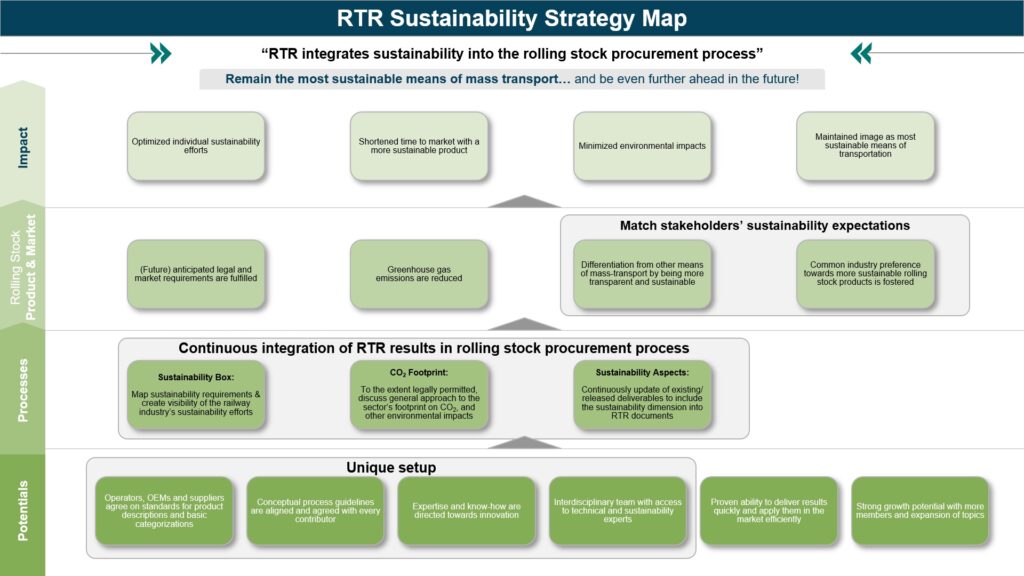
WP 05 – Sustainability
Overall Context
Integration of sustainability aspects into the rolling stock procurement processes
The Initiative recognizes the strategic importance and complexity of sustainability, the impact the rail industry can have in reducing the severity of climate change, the opportunity to improve sustainability in procurement, and the rail industry’s contribution to enabling sustainable mobility and the resulting contribution to society.
In Work Package 05 – Sustainability, the Initiative aims to identify different and voluntary rail-specific carbon footprint structures to create more visibility and proactive communication of sustainability to stakeholders in the rail industry.
As part of the overall RTR initiative, the results of this work package were developed in accordance with RTR’s compliance mechanism (Antitrust Council) and with the involvement of an external legal competition advisor.
Documents about Sustainability
To download the documents, please log in.
Objectives
Holistic consideration of sustainability aspects in the procurement of rolling stock
The RTR Initiative aims to increase the overall visibility and proactive communication of rolling stock’s sustainability. Facilitating the integration of sustainability aspects into the rolling stock procurement processes is an objective to ensure rolling stock products remain the most sustainable means of mass transport.
Voluntary generic CO2 footprint structures or measurement tools based on existing norms and standards shall be developed to facilitate the integration of sustainability aspects into the procurement of rolling stock. A comprehensive understanding of emission drivers and impact factors for evaluating the environmental footprint of rolling stock shall be fostered.
The RTR Work Package WP 05 concentrates on ecological concerns. The primary attention is therefore focused on aspects like reduction of CO2 emissions, resource consumption, waste, and packaging material as well as the increase of the lifecycle of products and the recycling rate.
Introduction to the sustainability strategy map

The RTR Sustainability Strategy Map (see Figure 1) resembles the strategy of RTR regarding the topic of sustainability. It demonstrates RTR’s joint understanding of how to incorporate sustainably aspects in the initiative. The map was developed based on the goals of the participating RTR members to optimize individual sustainability efforts, shortened time to market with a more sustainable product, minimization of environmental impacts and ensuring that rolling stock remains the most sustainable means of transport.
The strategy map outlines strategic objectives of the initiative and aligns its actions and resources to achieve these objectives. The specific categories of Potentials, Processes, Rolling Stock Product & Market, and impact have been chosen to represent the key areas where the RTR Initiative contributes.
